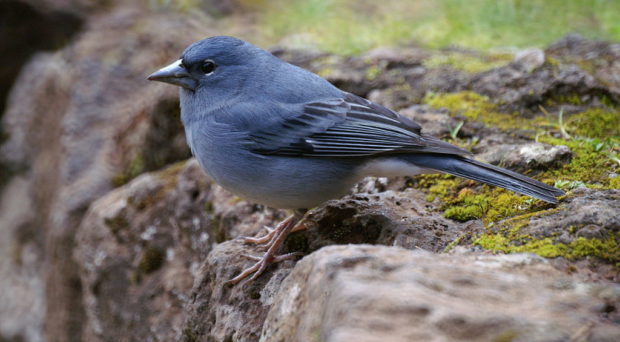
Darwin’s ideas on evolution were originally sparked upon visiting the Galapagos Islands in 1835. These islands, due to their geographic isolation, boast a truly distinctive animal and plant life. Today we know that species become island residents either by drifting on archipelagos as they break off from continental landmasses or by travelling across the ocean to newly emerged oceanic islands. Native island populations, spatially separated from other continental populations of the same species, experience unique evolutionary forces that over time result in the generation of new species. Migrating birds are obvious candidates for becoming island dwellers. Indeed, Darwin’s theory of evolution was partly inspired by observing a group of closely related bird species, the Galapagos finches.
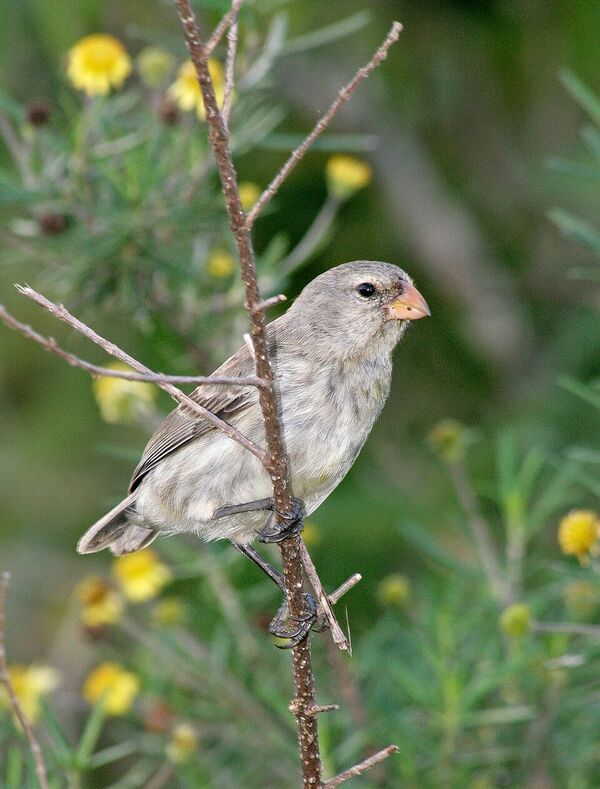
Islands therefore represent ideal ‘natural laboratories’ in which to conduct evolutionary studies. In this blog we discuss two ornithology articles that have been published as part of the launch of BMC Zoology.
The first, a review by Sonia Kleindorfer from Flinders University and Rachael Dudaniec from Macquarie University in Australia, focuses on the fascinating relationship between Darwin’s finches and the parasitic fly Philornis Downsi, a relationship that has forced both species to coevolve or perish.
In the second article, Jan Terje Lifjeld and colleagues in a collaborative international research project involving the University of Oslo and the Macaronesian Institute of Field Ornithology in Spain, describe a new species of Blue Chaffinch in the Canary Islands and reveal novel criteria that facilitate the challenging task of defining new bird species in the wild.
Fly parasite rewrites the song of Darwin’s finch
Darwin’s finches are used as a model field system to study evolution in the wild. The populations of finches in the Galapagos Islands have greatly changed during the two centuries that biologists have been studying them. One of the main contributions to this rapid change in the finch populations is the deadly relationship with the parasitic fly P. Downsi. In their article, Sonia Kleindorfer and Rachael Dudaniec review nearly two decades of research describing the host–parasite interaction between P. Downsi and Darwin’s finches that has altered the evolutionary trajectory of both species by forcing them to coevolve.
P. Downsi was first found in the Galapagos Islands in 1997, but it remains uncertain when and how this parasitic fly was originally introduced to the archipelago by humans. Since then, the number of fly larvae per Darwin’s finch nest has strongly increased and flies have colonized most of the archipelago. To date, the parasitic fly larvae kill just over half of Darwin’s finch nestlings by consuming the blood and tissues of the developing birds. As more nestlings die due to infestation, the situation becomes counterproductive for the parasite as its food resources become limited, and consequently the larvae start dying together with the nestlings.
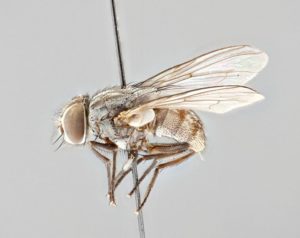
This relationship has evolved into a sustained equilibrium where both species survive through shaping each other’s evolution. Through real time video monitoring, researchers have observed that birds have changed their parental care and nesting-building behaviours to reduce infestations. Also, the proportions of finch that are genetically more resistant to larvae infestation have doubled in the last years. On the other hand, the flies have adapted to that by altering their reproductive cycle to lay eggs earlier and in a coordinated manner involving several females, which causes a more virulent infestation of the nestlings.
These intriguing adaptations observed in both species prompt broader evolutionary questions regarding the role of parasites as powerful evolutionary forces in nature. One consequence of this coevolution can in fact be already heard: the beaks of those finches that survive fly infestation have enlarged nostrils that persist into adulthood, altering birdsong characteristics (see pictures below).
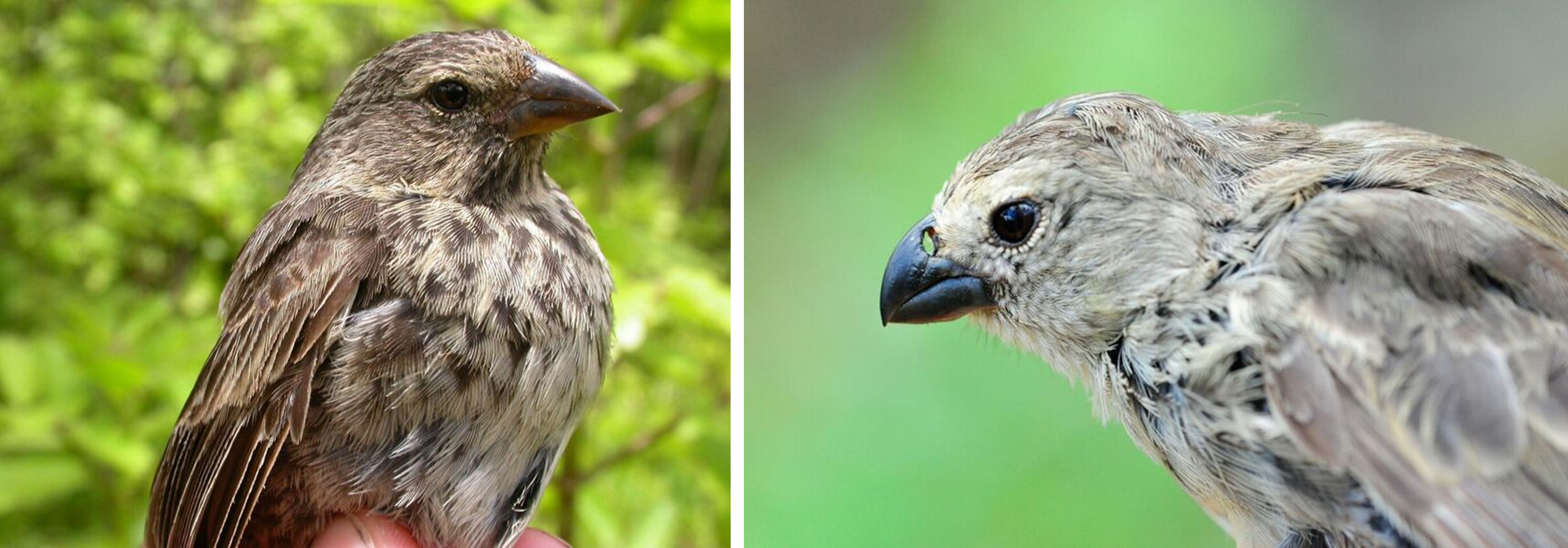
These apparently individual changes in beak morphology and birdsong are likely to influence mate choice and henceforth the entire species’ fate. If you wish to read the full article by Sonia Kleindorfer and Rachael Dudaniec published in BMC Zoology, please click here.
Blue Chaffinch in the Canary Islands – singing evolution out loud
The Blue Chaffinch is a bird species endemic to the pine tree forests of the Canary archipelago. Two Blue Chaffinch populations inhabit the central islands, Fringilla teydea in Tenerife and Fringilla polatzeki in Gran Canarias. Their isolation has resulted in distinct evolutionary trajectories, and currently the two insular populations differ in obvious defining features such as plumage colour and body size. However, despite these marked differences observed more than a hundred years ago, the two populations are still considered to belong to the same species. Jan Terje Lifjeld and colleagues have performed a detailed analysis of this parallel evolution aiming to answer intriguing questions such as When do subpopulations become different species? and How can we assess this in the wild?
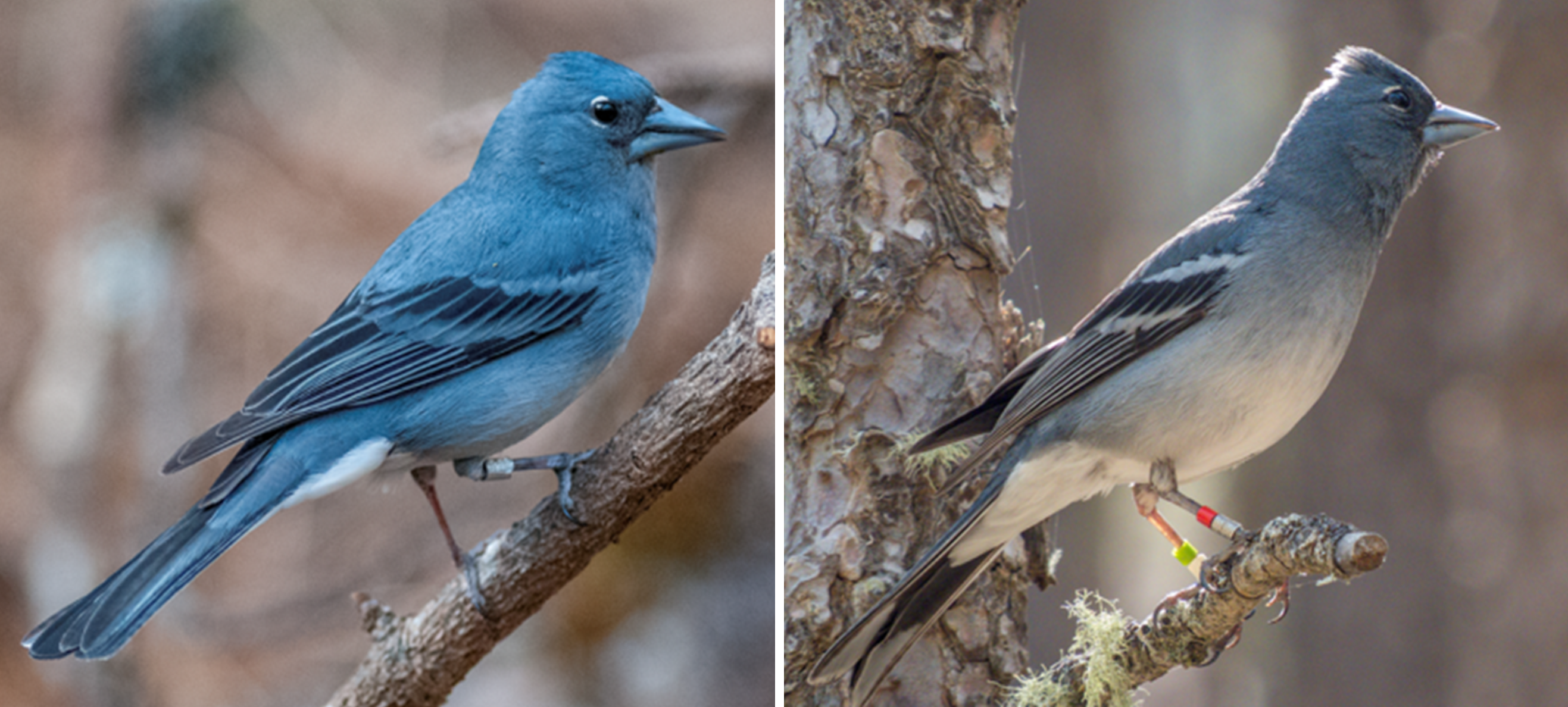
One of the major challenges in bird taxonomy consists of delimitating new species. Generally, scientists agree that reproductive incompatibility is the definitive proof to describe a new species, but this cannot be directly assessed in the wild. Therefore, researchers need to find evidence of reproductive incompatibility from multiple, differing characteristics that indicate a low chance of breeding between the two subspecies if they are again in contact after isolation.
In this study, the authors analyse for the first time the known variations in colour plumage and body size in a quantitative way, and report new and divergent genetic and sexual traits that are key for mating and therefore for species differentiation.
One key distinctive feature that the authors found between the two Blue Chaffinch populations was the differences observed in birdsong, as illustrated in the sonograms in the image below. Acoustic signals are one of the most prominent forms of bird communication. Features of the songs of males, in particular structure, amplitude and frequency, have evolved to perfect sexual selection and to attract females. Remarkably, the ‘vibrato’ in Fringilla teydea in Tenerife is more like a crescendo, whereas in Fringilla polatzeki in Gran Canarias it is markedly softer (see images below).
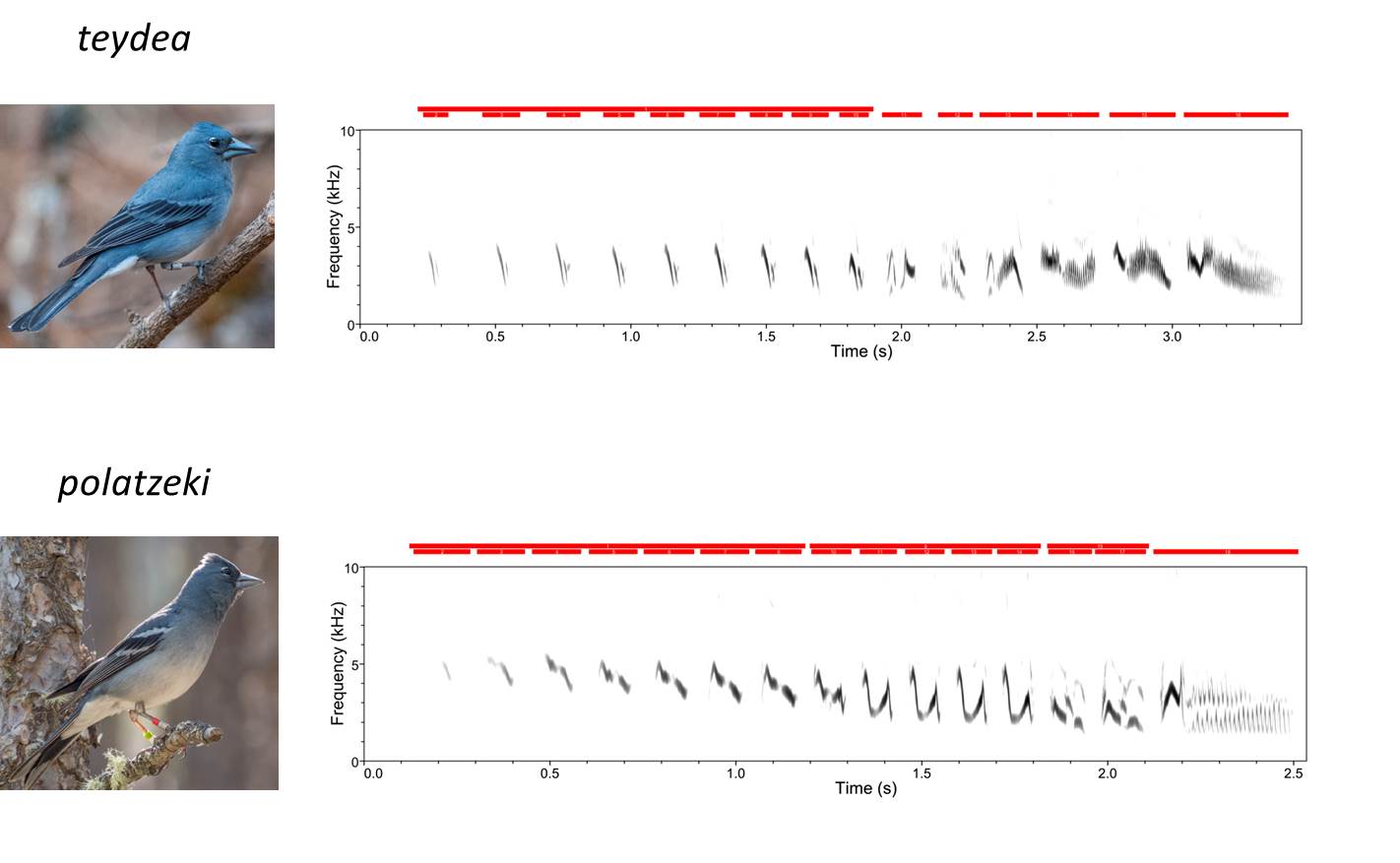
Moreover, the researchers found that other sexual traits directly involved in reproduction after mating differ between the two insular populations. Sperm length, which is correlated with the length of the female’s reproductive organ, is a particularly important feature because will determine breeding success. Observed differences in sperm length between the two Blue Chaffinches predict a low likelihood of breeding between individuals of the different populations: Fringilla teydea males with shorter sperm are unlikely to breed with Fringilla polatzeki females, and vice versa.
The large differences in structural and sexual traits found by the researchers indicate that these Blue Chaffinch populations have vastly diverged and can be considered different species. These exciting findings advocate a wider use of sexual traits to overcome the challenge of determining new species. If you wish to read the full article by Jan Terje Lifjeld and co-workers published in BMC Zoology, please click here.
Forever changes
Having focused our eye on this microcosm of the natural world, we look back in reflection on what we have learnt from these two articles. The distinct, yet overall subtle variations revealed by these birds, give us a glimpse into the mechanisms that are constantly at work in evolution. The steadily ‘shifting and adjusting’ gears over time, creates ever changing examples of diversity and adaptation in nature.
Comments